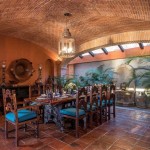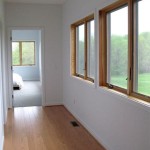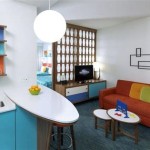Interior Design Help Free: Resources and Approaches to Achieve Your Dream Space
Creating a visually appealing and functional interior space can often feel overwhelming. Professional interior design services offer expertise and guidance, but the associated costs can be prohibitive for many. Fortunately, a wealth of free resources and strategies exist that empower individuals to undertake their own interior design projects effectively and affordably.
This article explores various avenues for accessing free interior design help, focusing on practical tools, available online resources, and methods for maximizing personal design vision while adhering to budgetary constraints. The information presented aims to equip individuals with the knowledge necessary to confidently transform their living spaces without incurring significant expenses.
Leveraging Online Design Tools and Resources
The internet provides a vast repository of information and tools that can significantly aid in the interior design process. These resources range from inspiration galleries to sophisticated design software offered on a freemium basis. Understanding how to effectively utilize these digital assets is crucial for any individual embarking on a DIY interior design project.
Platforms like Pinterest and Instagram serve as invaluable sources of visual inspiration. Users can create mood boards, save images of desired aesthetics, and discover current design trends. Searching specific keywords related to design styles, color palettes, or furniture arrangements allows for the focused curation of ideas that align with individual preferences. Analyzing these collected images helps in identifying recurring themes and establishing a cohesive design direction.
Numerous websites and blogs dedicated to interior design offer free advice, tutorials, and product recommendations. These resources often feature articles on topics such as space planning, color theory, furniture selection, and DIY decorating projects. Subscribing to newsletters and following social media accounts of established designers and design publications provides ongoing access to updated information and emerging trends.
Several software applications offer free versions with limited functionality suitable for introductory design projects. These programs allow users to create floor plans, experiment with furniture layouts, and visualize different color schemes within a virtual environment. While the free versions may not include all the advanced features of their paid counterparts, they provide a user-friendly platform for exploring design possibilities and refining spatial arrangements.
Online communities and forums dedicated to home improvement and interior design provide a space for individuals to connect with like-minded enthusiasts, share ideas, and seek advice. These platforms often feature discussions on specific design challenges, budget-friendly solutions, and product reviews. Actively participating in these communities offers opportunities to learn from the experiences of others and receive personalized recommendations.
Virtual reality (VR) and augmented reality (AR) applications are increasingly available, some with free trials or limited free versions, offering immersive experiences. These technologies allow users to virtually place furniture and décor items in their actual spaces, providing a realistic preview of the final result. This helps in avoiding costly mistakes related to furniture size, color coordination, or spatial compatibility.
Capitalizing on Free Consultations and In-Store Design Services
Many furniture retailers and home improvement stores offer complimentary design consultations as a means of attracting customers. While the primary goal is often to promote product sales, these consultations can provide valuable insights and guidance for individuals seeking design assistance. Understanding how to leverage these services effectively is key to maximizing their benefits without feeling pressured to make unnecessary purchases.
Preparing for a free design consultation is crucial for ensuring productive use of the allotted time. Gather measurements of the space, take photographs from various angles, and create a list of specific design challenges or goals. Having a clear understanding of personal preferences, budgetary constraints, and desired aesthetic will enable the consultant to provide more relevant and tailored recommendations.
During the consultation, actively listen to the designer's suggestions and ask clarifying questions. Focus on obtaining practical advice regarding space planning, furniture placement, color selection, and lighting options. While the consultant may present specific product recommendations, feel free to explore alternative options and compare prices before making any purchasing decisions.
Some retailers offer in-store design tools, such as color matching services or visualization software, that allow customers to experiment with different design elements. These tools can be particularly helpful in selecting paint colors, choosing flooring materials, and coordinating fabrics for upholstery or window treatments. Taking advantage of these resources empowers individuals to make informed decisions based on visual representation and expert guidance.
Attending workshops and seminars offered by furniture stores or design centers provides opportunities to learn about current trends, design principles, and DIY decorating techniques. These events often feature presentations by experienced designers or industry professionals, offering valuable insights and practical tips for transforming living spaces. Registering for these events in advance ensures access to informative content and networking opportunities.
Building relationships with store associates can be beneficial for accessing design advice and receiving personalized recommendations. Communicating design goals and preferences to sales representatives allows them to identify suitable products and offer suggestions based on their knowledge of the store's inventory. This collaborative approach can lead to discovering unique items and achieving desired aesthetic outcomes.
Embracing DIY Projects and Upcycling Techniques
Undertaking DIY projects and embracing upcycling techniques represents a cost-effective and creative approach to interior design. Repurposing existing furniture, creating handcrafted décor items, and implementing budget-friendly renovation solutions allows individuals to personalize their living spaces while minimizing expenses. Mastering basic DIY skills and exploring upcycling possibilities are essential for achieving unique and affordable design outcomes.
Repainting furniture is a simple yet transformative DIY project that can significantly alter the appearance of a room. Selecting complementary colors, applying appropriate priming techniques, and experimenting with decorative finishes can revitalize old or outdated pieces. Online tutorials and instructional videos provide step-by-step guidance for achieving professional-looking results.
Creating custom artwork and wall décor offers opportunities to personalize living spaces and showcase individual creativity. Framing personal photographs, creating abstract paintings, or designing patterned wall stencils are all accessible DIY projects. Utilizing affordable materials, such as canvas boards, acrylic paints, and craft supplies, minimizes expenses while maximizing creative expression.
Upcycling existing items into functional and decorative objects reduces waste and adds unique character to a room. Transforming old jars into vases, repurposing wooden pallets into furniture, or creating lamps from vintage bottles are examples of upcycling projects that combine creativity with sustainability. Seeking inspiration from online sources and experimenting with different materials can yield surprising and rewarding results.
Implementing budget-friendly renovation solutions, such as installing peel-and-stick wallpaper, replacing cabinet hardware, or adding decorative molding, can enhance the overall aesthetic of a space without requiring extensive construction work. These projects can be completed by individuals with basic DIY skills and minimal tools, making them accessible and affordable.
Creating custom window treatments, such as sewing curtains, crafting roman shades, or designing valances, allows for significant cost savings compared to purchasing pre-made options. Selecting fabrics, measuring dimensions, and following online sewing tutorials can result in personalized window coverings that perfectly complement the room's design scheme.
Adding decorative accents, such as throw pillows, blankets, and area rugs, can dramatically transform the look and feel of a room without requiring major renovations. Searching for affordable options at discount stores, thrift shops, or online marketplaces offers opportunities to acquire stylish and budget-friendly accessories. Coordinating these accents with existing furniture and color palettes enhances the overall cohesiveness of the space.
9 Interior Design Services That Are Free Or Affordable In 2024
Interior Designers Share How To Make Your Home Look Better For Free

7 Free Or Affordable Interior Design Services

10 Best Free Interior Design Services Foyr
Free Interior Design Consultation What To Expect And How Prepare Vevano

Top Free Interior Design And

The Best Free Interior Design

7 Free Or Affordable Interior Design Services

Free Interior Design 10 Best To Help Your Own House Architecture

Free Interior Design Consultation What To Expect And How Prepare Vevano








